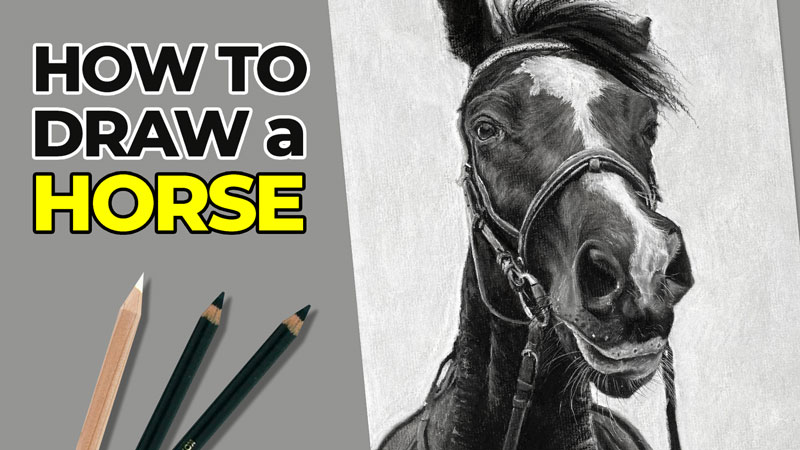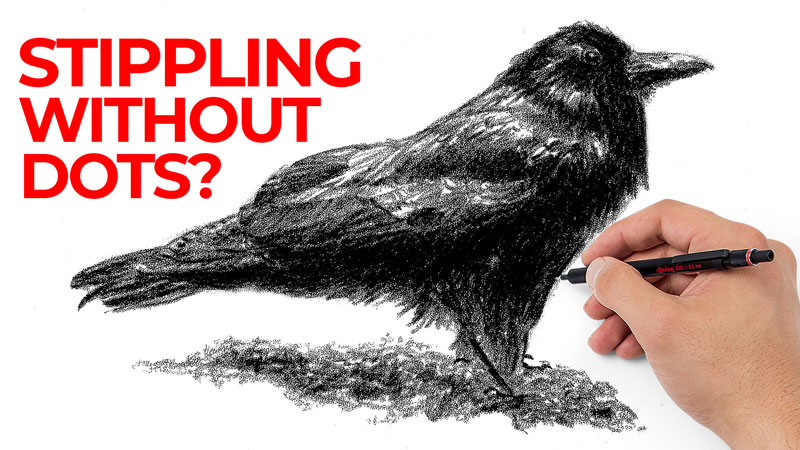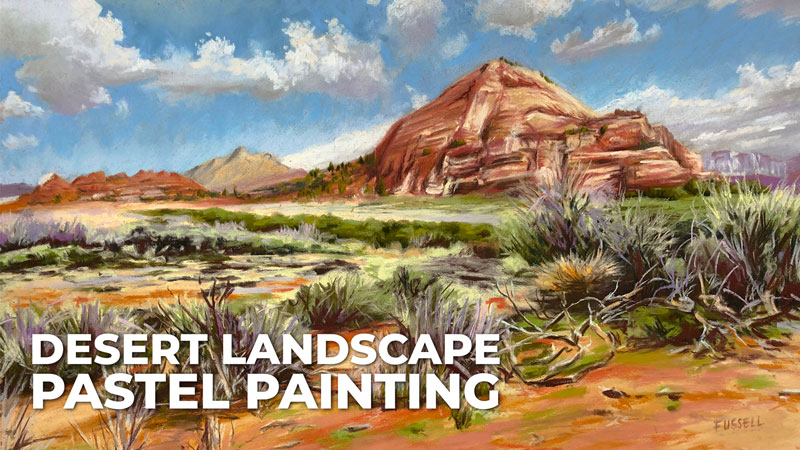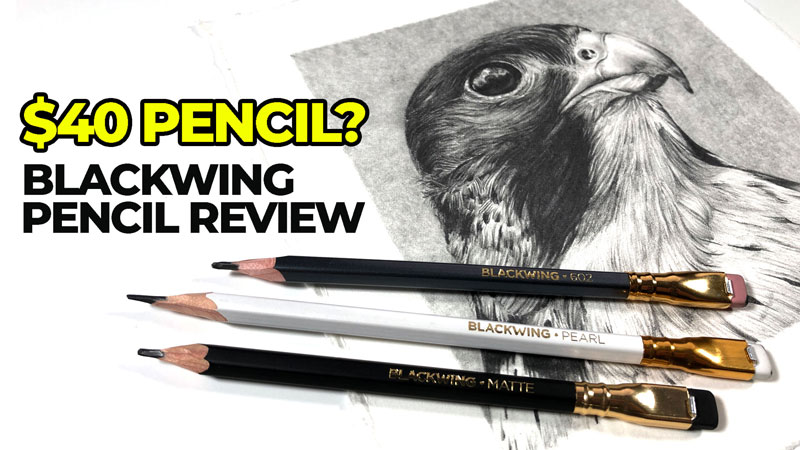Sharpening Pencils
Does a nicely sharpened pencil give you an artistic advantage? You bet it does. In this lesson, we’re going to take a look at how you can sharpen your pencil like a pro.
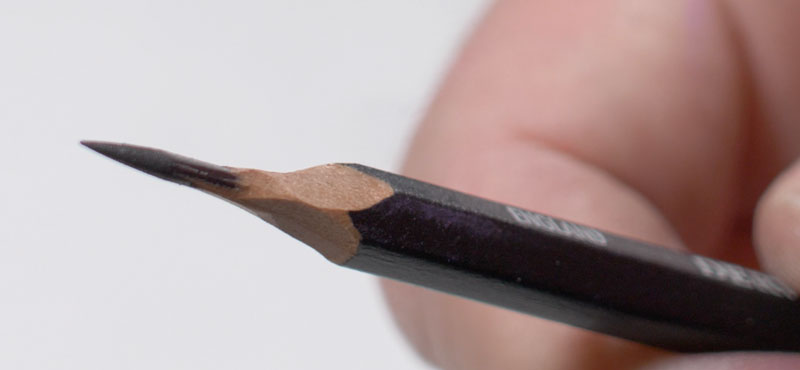
We’re all familiar with all of the pencil sharpeners out there. There are electric pencil sharpeners, handheld pencil sharpeners, and of course, those that are stuck to the wall. All these options work great, but how do artists get those really long tips that allow them such precision and a variety of different mark making options? Well, let’s take a look at a few options.
See Also: All About Drawing Papers
Exposing More Medium at the Tip
Ordinary pencil sharpeners do a fine job sharpening a pencil, but the tip that’s produced is better for writing. It’s adequate for drawing, but we can do better. The secret to getting those long tips on an artist’s pencil is simply to expose more of the medium at the tip of the pencil.
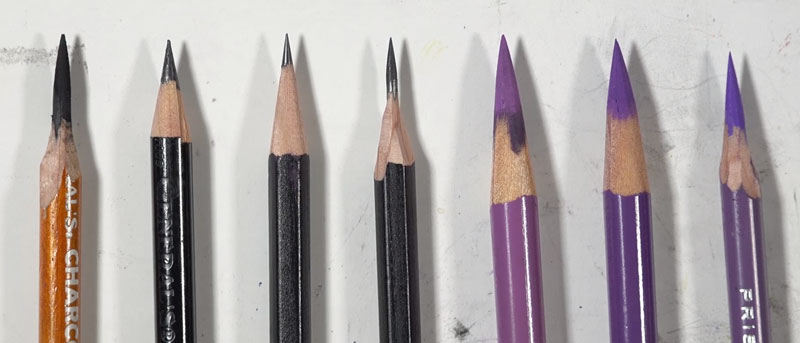
Sharpening a Pencil with a Knife
One way to expose more of the medium at the tip of the pencil is to use a knife. This approach does have a few risks. You clearly can cut yourself. So if you are a younger artist, perhaps it’s a good idea to get some adult help with this.
Holding the pencil firmly, simply use a sharp knife and patiently cut the wood away from the pencil, pushing the knife away from your body. Once you’ve exposed enough of the medium, use a sandpaper pad to finish the job.
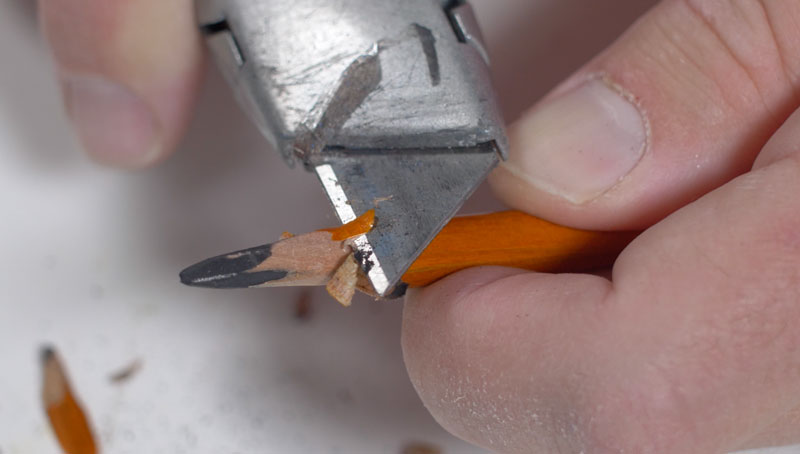
While rotating the shaft, slide the pencil tip back and forth over the sandpaper, producing a super sharp tip. This technique does require a bit of patience and clearly some attention to what you’re doing but it does work for nearly every drawing medium. Graphite pencils, charcoal pencils, pastel pencils, and colored pencils can all be sharpened this way.
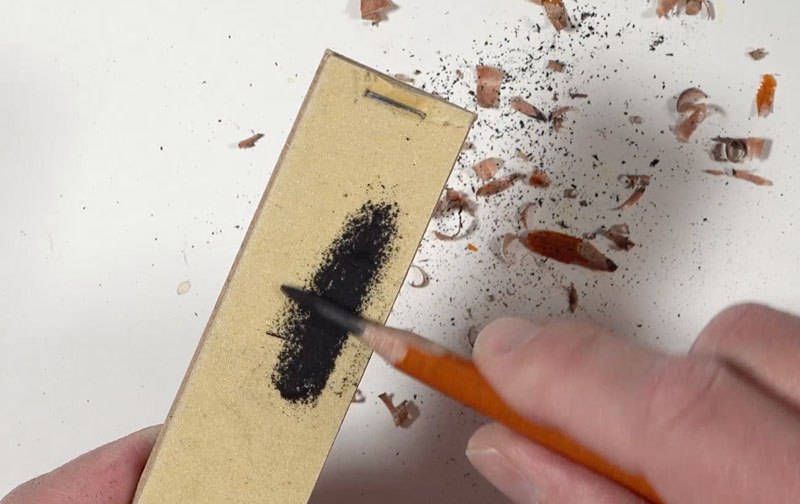
There are a couple of drawbacks to this approach of sharpening your pencil. The first drawback is obvious – you could cut yourself. The second drawback is that some pencils have extremely soft cores. With a rigid wood casing, breaking the core with a knife is super easy. And if you sharpen and break the core often, then your pencil will be gone in no time.
Sharpening a Pencil with a Specialized Sharpener
Thankfully, there are some alternatives to sharpening your pencil with a knife that still produces a nice long tip. Some manufacturers make pencil sharpeners specifically for artists. These sharpeners still produce the long tips that we’re after, but with less danger to our bodies and our pencils.
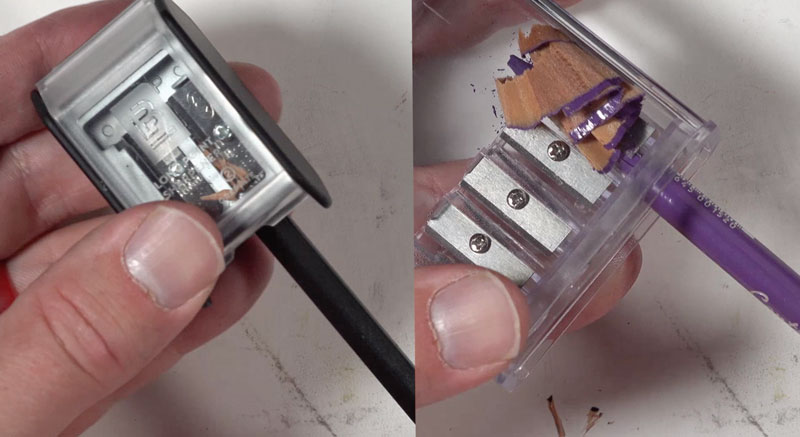
This first option features several different sized openings and a container to catch the shavings. What makes this sharpener different from a regular handheld pencil sharpener is that the core of the pencil is allowed to extend out beyond the tip of the blade. This produces a long tip.
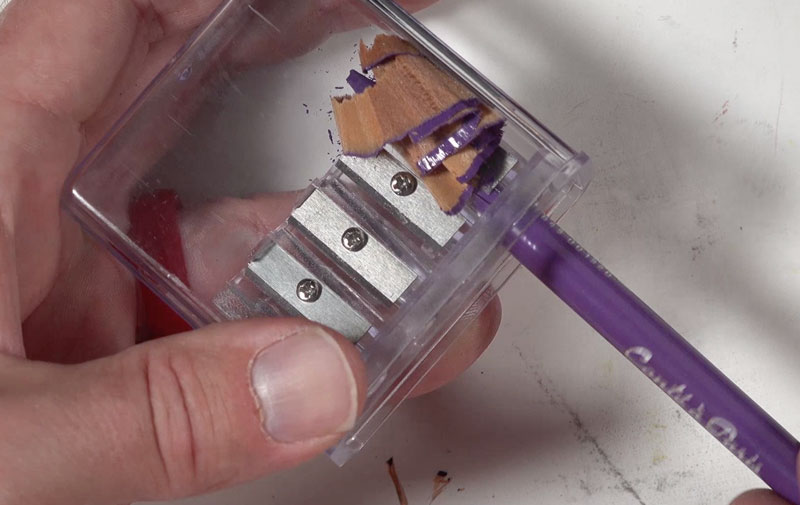
This sharpener also has a small bit of sandpaper inside of the catch that you can use to make the tip even sharper, but I found that using the sandpaper pad works a lot better. Due to all of the different sized openings, you can sharpen all kinds of pencils with this one sharpener.
(This sharpener worked great for a while but quickly fell apart. I would recommend the Blackwing, which follows.)
Another option is the long tip pencil sharpener by Blackwing. This sharpener features two openings and you might think that each opening is for a different type of pencil, but that’s not the case.
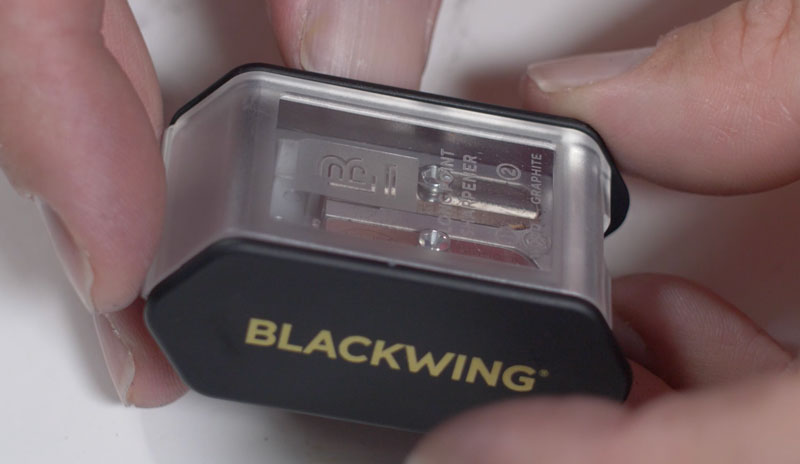
Sharpening is actually a two step process. The first opening is for sharpening back of the wood. The second opening is for sharpening the graphite. Once you go through the process of inserting the pencil in the first opening and then the second opening, the result is a super sharp, long tip – perfect for drawing.
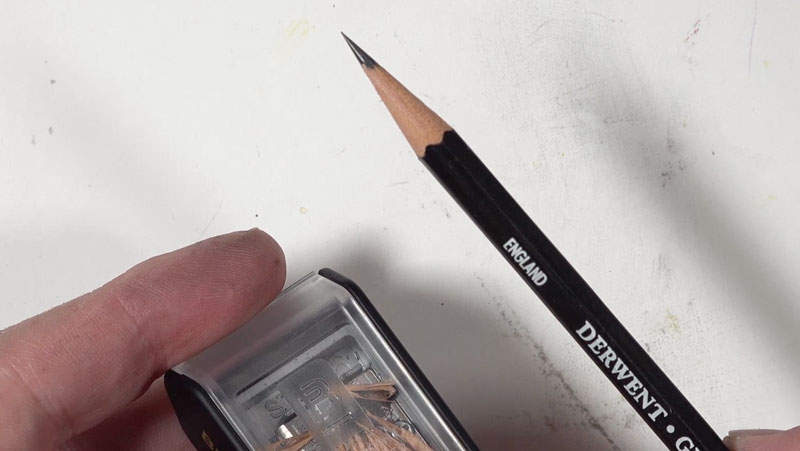
Buy the Blackwing Pencil Sharpener (This link is an affiliate link which means I make a small commission if you purchase at no additional cost to you.)
This sharpener is specifically designed for graphite, but I don’t see why it wouldn’t work for other mediums like colored pencils.
Pencil Sharpening for Artists – Conclusion
So there you have it – a quick look at some options for sharpening your pencil like a professional artist. Now obviously, the advantage of sharpening your pencil with a longer tip is that you have more options for creating more variety in your mark making, but also that extra precision you get with a super sharp pencil.
If so, join over 36,000 others that receive our newsletter with new drawing and painting lessons. Plus, check out three of our course videos and ebooks for free.

